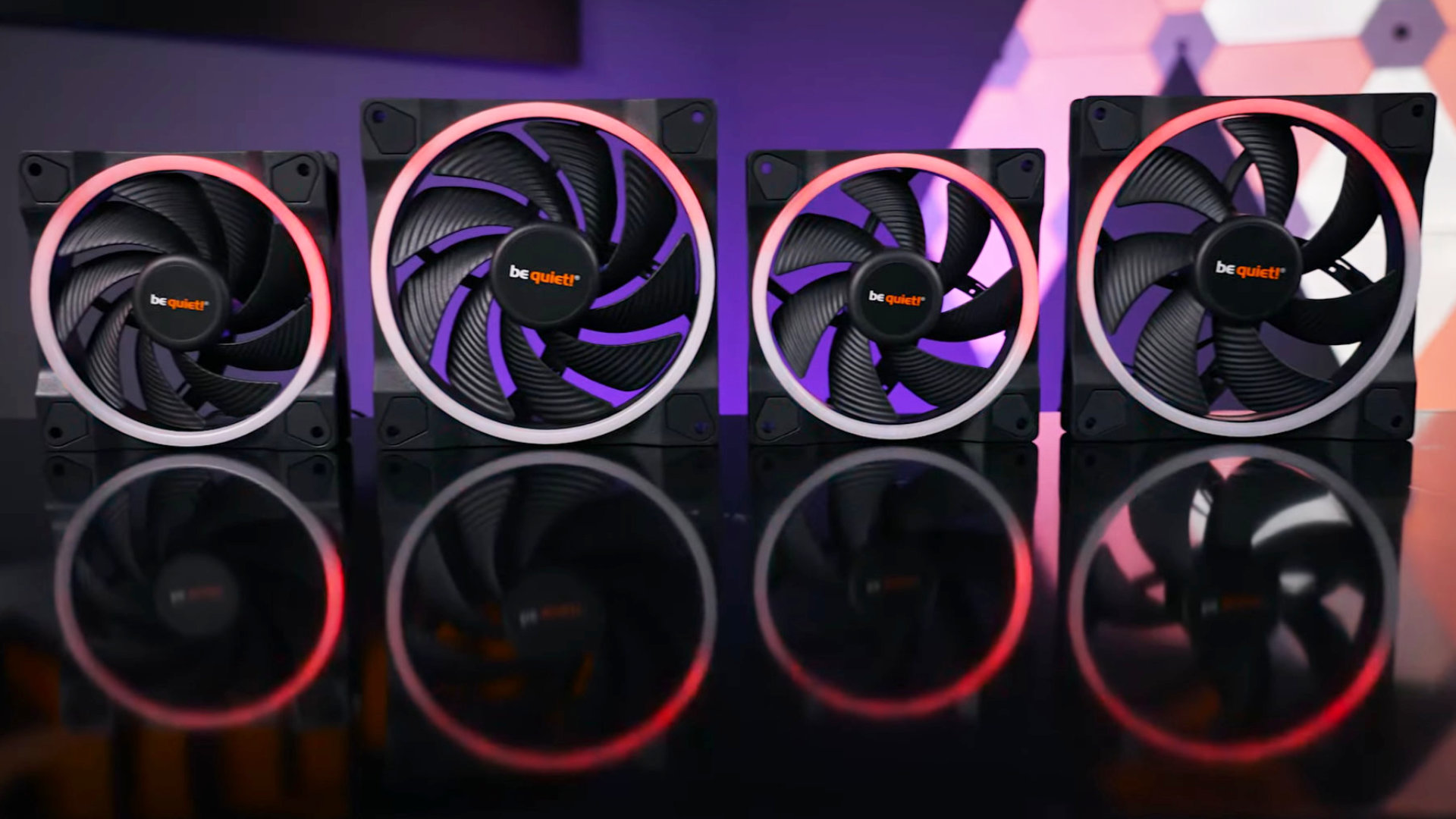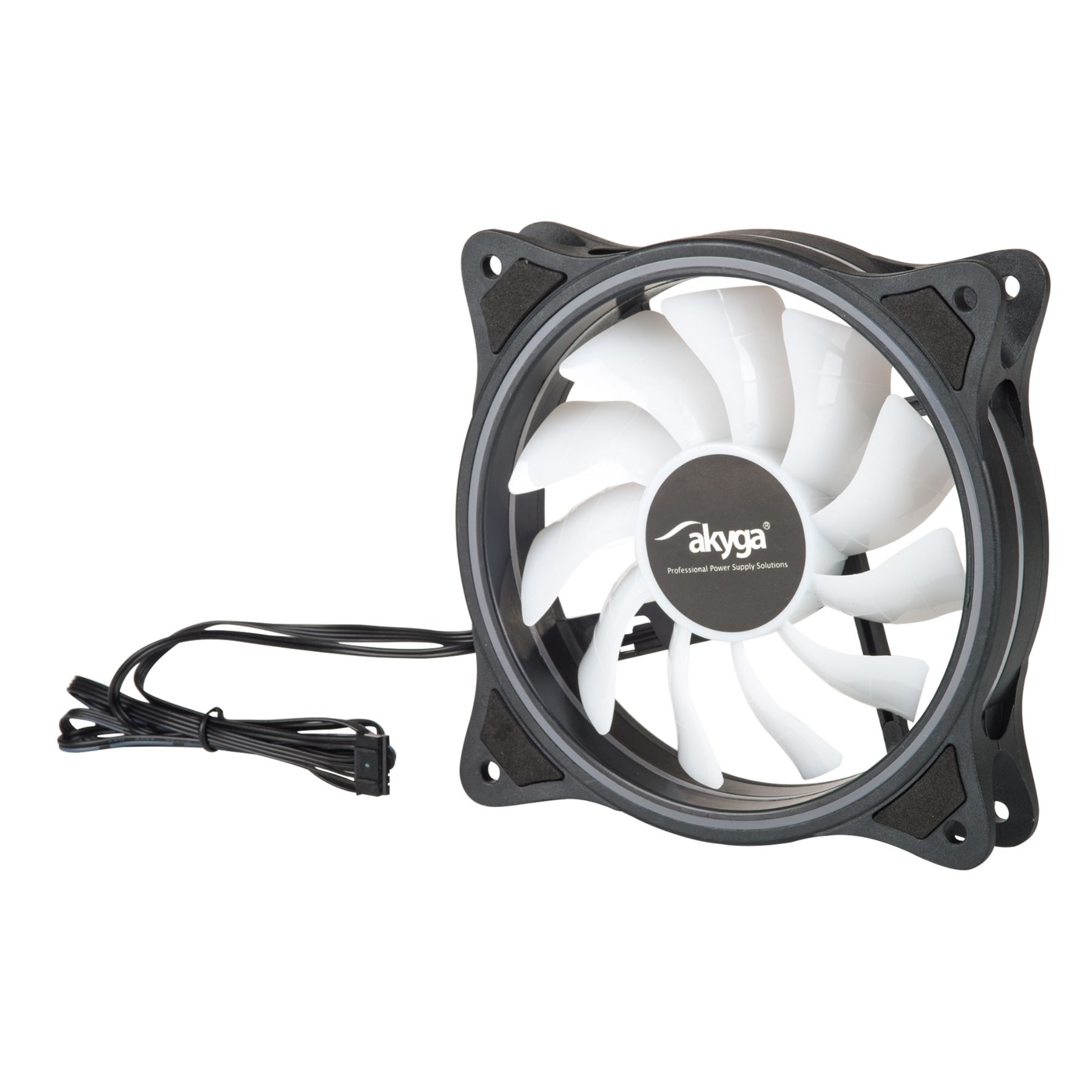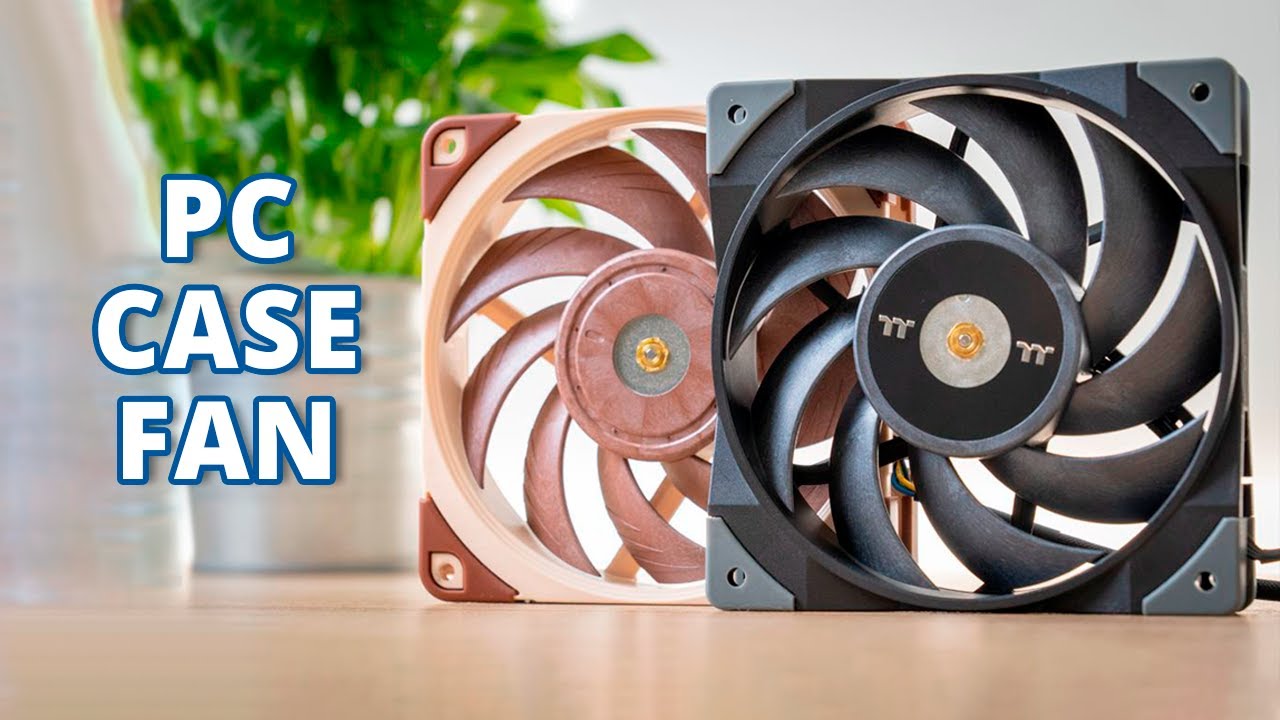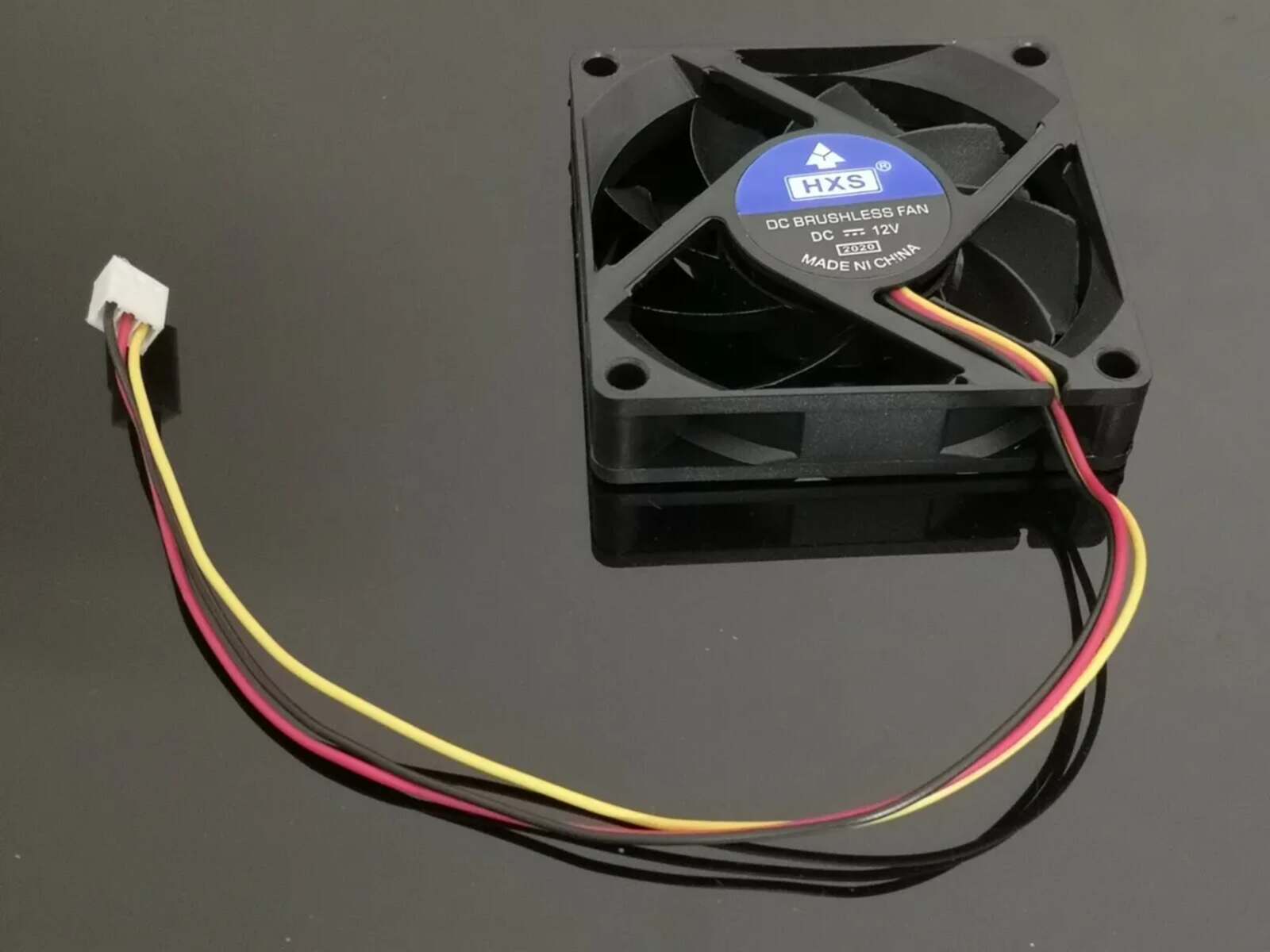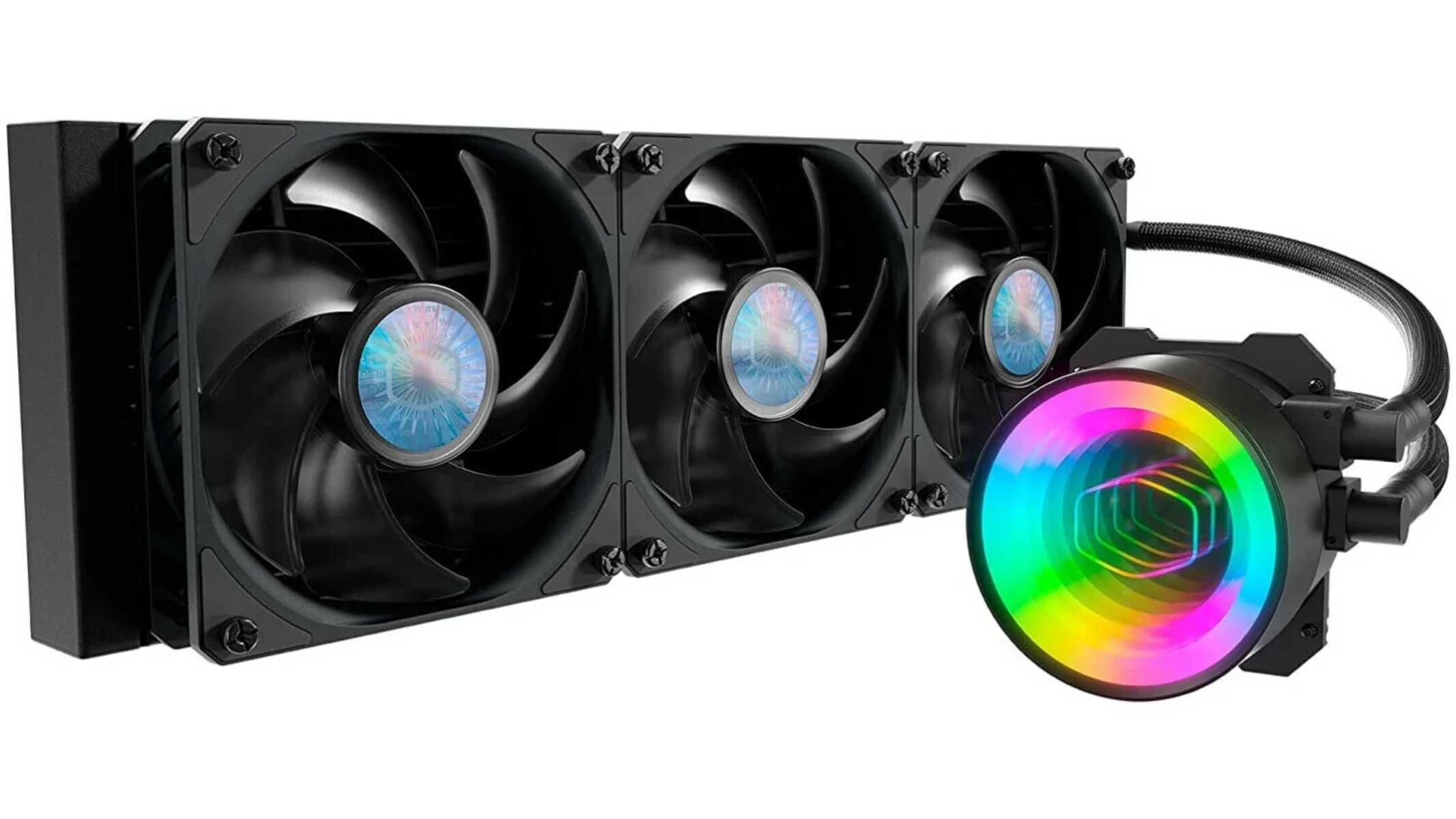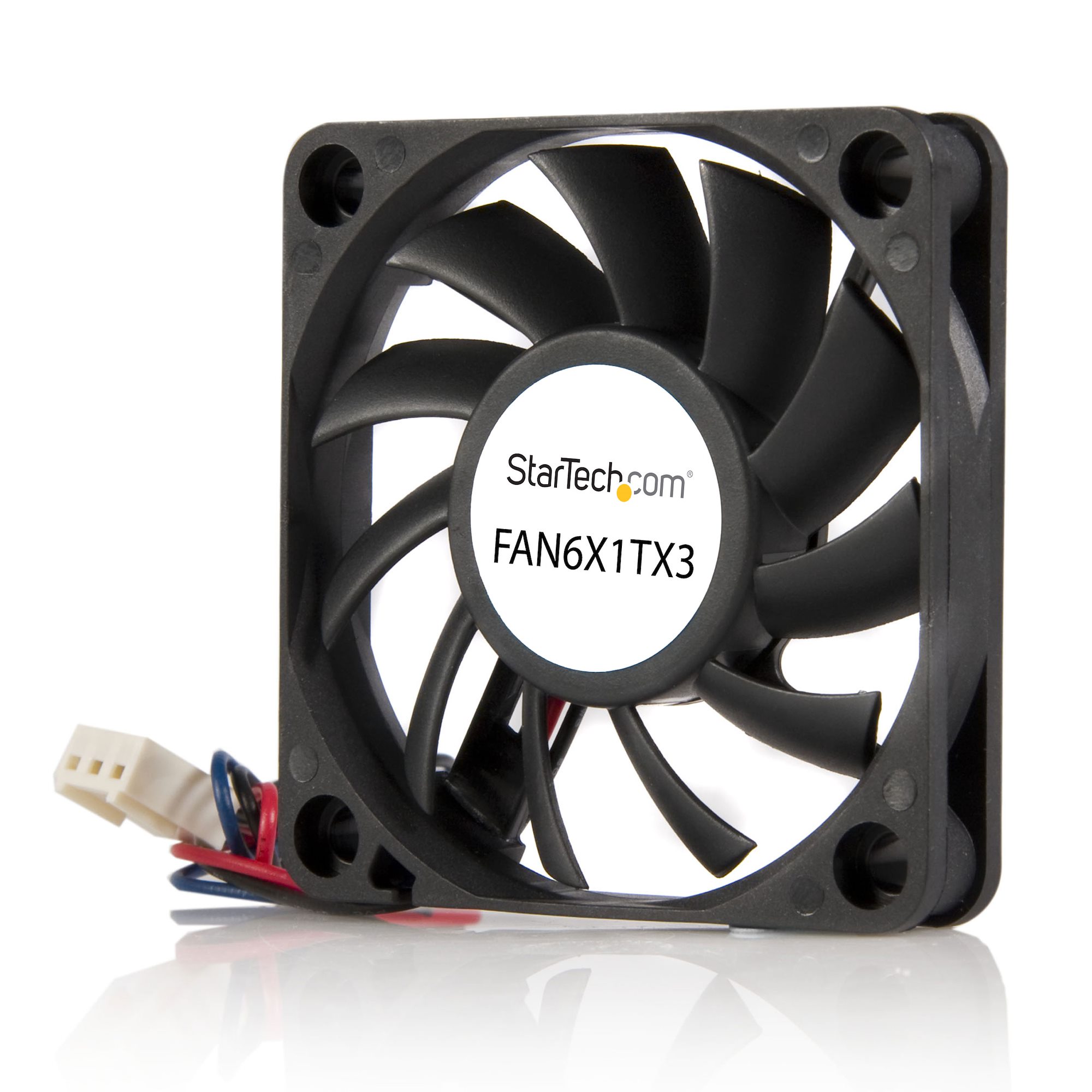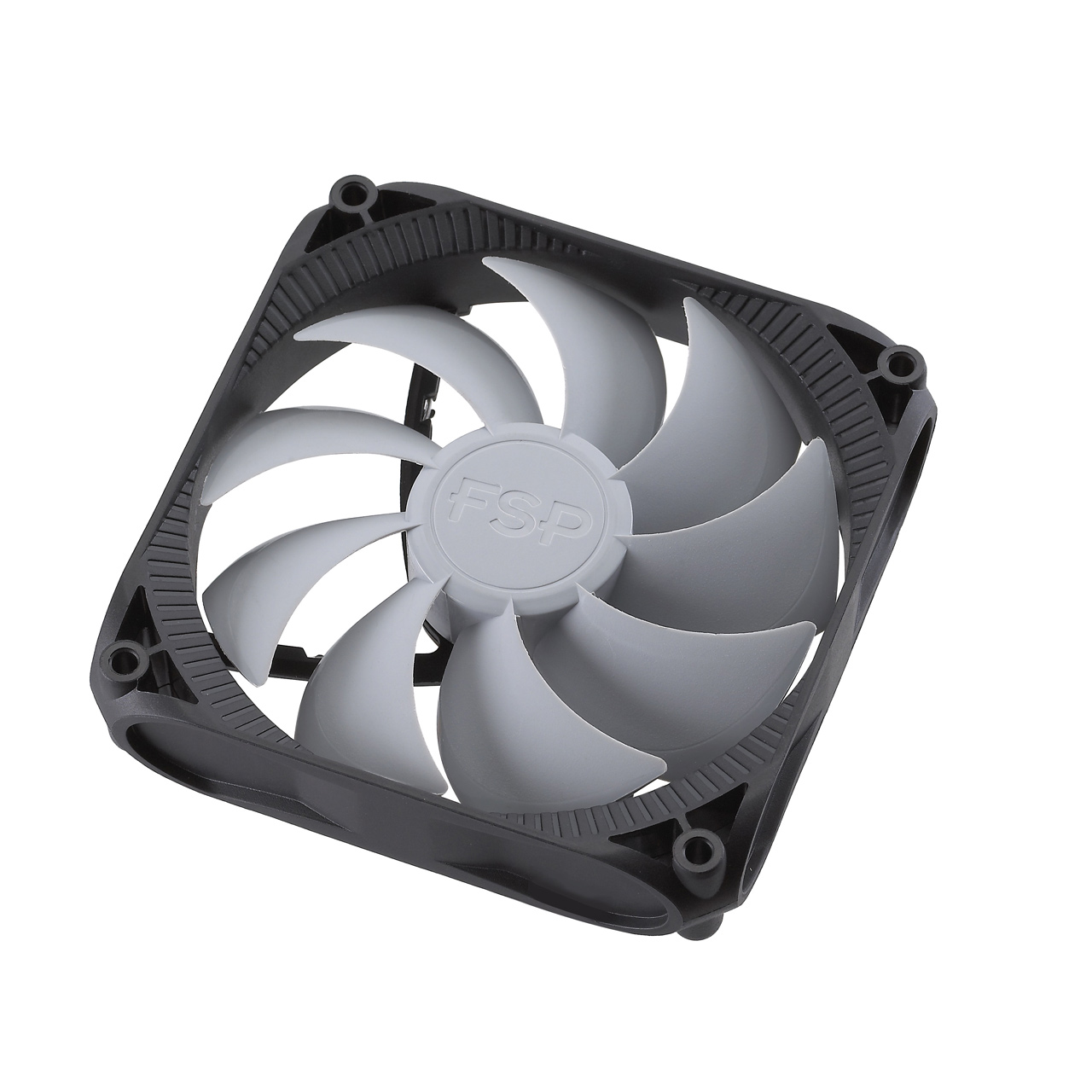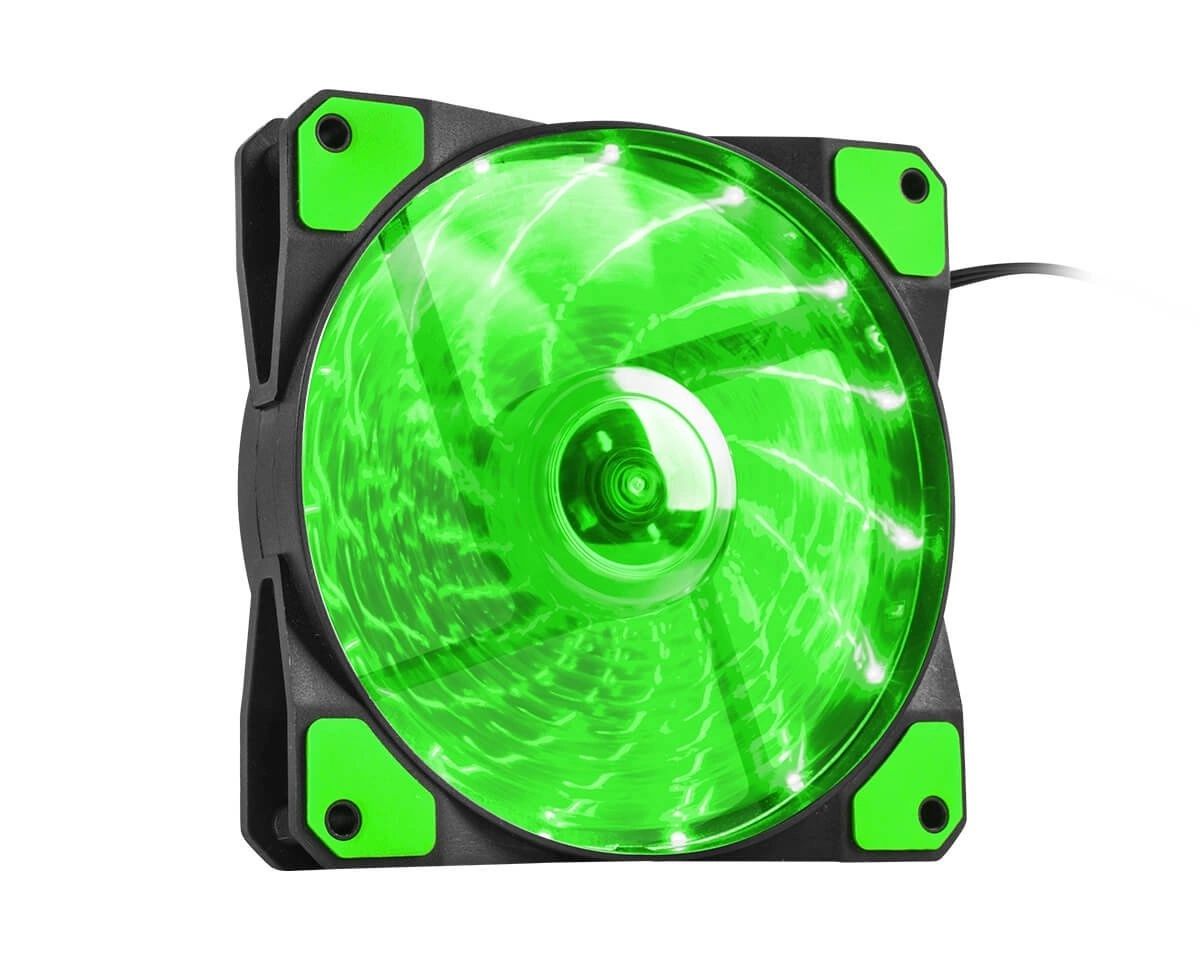Introduction
Welcome to the world of case fans! Whether you’re a seasoned computer enthusiast or just starting to delve into the realm of PC building, you’ve probably come across the term CFM when researching the best case fans to keep your system cool. But what exactly is CFM, and why does it matter when selecting a case fan?
CFM, short for Cubic Feet per Minute, is a metric used to measure the airflow of a fan. It represents the volume of air that a fan can move in one minute. In simple terms, the higher the CFM rating, the more air the fan can push or pull through your computer case, helping to dissipate heat and maintain optimal temperatures for your components.
A case fan, as the name suggests, is a fan specifically designed to be mounted inside a computer case. Its primary purpose is to facilitate the airflow within the case, aiding in the cooling process of the various components, such as the CPU, GPU, and motherboard. By creating a constant flow of fresh air, case fans help prevent overheating and improve the overall stability and longevity of your system.
When considering which case fan to purchase, CFM becomes a crucial factor to evaluate. The airflow capability of a fan directly impacts its cooling performance. Higher CFM ratings indicate a more powerful fan that can move more air, resulting in better heat dissipation.
Now that we understand the basics of CFM and the role of case fans, let’s take a closer look at how CFM is measured, as well as the factors to consider when choosing a case fan based on its CFM rating. By the end of this article, you’ll have a clear understanding of whether CFM truly matters when selecting a case fan, and how it can impact your system’s cooling capabilities.
What is CFM?
CFM, which stands for Cubic Feet per Minute, is a unit of measurement used to quantify the flow rate of air. It represents the volume of air that a fan can move in one minute. CFM provides a quantitative value that indicates the fan’s performance in terms of airflow.
CFM is an important metric when it comes to case fans because it determines how effectively a fan can cool your computer components. Higher CFM ratings indicate a greater amount of air being moved by the fan, resulting in increased airflow and better heat dissipation.
It’s essential to have adequate airflow within your computer case to maintain optimal temperatures. When components such as the CPU, GPU, and motherboard generate heat during operation, the case fan helps remove that heat by circulating fresh air into the case and expelling the hot air. Without proper airflow, the heat can build up, leading to thermal throttling, reduced performance, and potential hardware damage.
Case fans with higher CFM ratings are generally more powerful and capable of moving greater volumes of air. This is especially crucial in systems with high-end or overclocked processors, as they tend to generate more heat and require more effective cooling mechanisms. A case fan with a higher CFM can efficiently draw cool air into the case and expel hot air, ensuring that your components stay within safe temperature ranges.
However, it’s important to note that CFM is not the only factor to consider when selecting a case fan. Other factors like noise level, size, and static pressure also play a role in determining the overall cooling performance of the fan. It’s crucial to strike a balance between these factors and consider your specific requirements and constraints.
In the next section, we’ll explore how CFM is measured and the various methods used to determine the airflow capability of case fans. By understanding the measurement process, you’ll be better equipped to make informed decisions when selecting a case fan that meets your cooling needs.
What is a case fan?
A case fan, also known as a chassis fan or cooling fan, is a component specifically designed to enhance the airflow within a computer case. It is a crucial part of any PC build, working in conjunction with other cooling components to keep the internal temperatures in check.
The primary function of a case fan is to circulate air inside the computer case, ensuring that cool air reaches the hot components and expelling the heated air out of the case. By maintaining adequate airflow, case fans help prevent overheating, improve system stability, and extend the lifespan of your components.
Case fans come in various sizes, typically ranging from 80mm to 200mm, with 120mm and 140mm being the most common sizes used in modern computer cases. They can be mounted at different locations within the case, such as the front, rear, or side panels, to maximize air intake and exhaust.
Most case fans feature a blade and motor assembly housed within a frame. The blades are designed to efficiently move the air, while the motor provides the necessary power to rotate the blades at high speeds. The frame helps secure the fan in place and also assists in directing the airflow in the desired direction.
In addition to the standard case fans, there are also specialized types available. These include high-performance fans designed for overclocked systems or gaming rigs, silent fans that prioritize low noise levels, and RGB fans that feature colorful lighting effects to enhance the visual aesthetics of your build.
It’s important to note that case fans alone may not be sufficient to provide optimal cooling for certain high-end or heavily overclocked systems. In such cases, enthusiasts often opt for additional cooling solutions like liquid cooling or aftermarket CPU coolers to complement the role of case fans.
When choosing a case fan, factors such as airflow (measured in CFM), noise level (measured in decibels), and static pressure (ability to overcome resistance) should be considered. Finding the right balance between these factors ensures that you select a case fan that meets your cooling needs while achieving an optimal balance between performance and noise.
Now that we understand what a case fan is and its importance in maintaining a properly cooled system, let’s delve deeper into the significance of CFM (Cubic Feet per Minute) in the context of case fans.
The importance of CFM in case fans
When it comes to keeping your computer components cool, the airflow generated by case fans plays a crucial role. This is where CFM (Cubic Feet per Minute) comes into play, as it directly impacts the cooling performance of a case fan.
The higher the CFM rating, the greater the amount of air the fan can move in one minute. This increased airflow helps remove hot air from the case and bring in fresh, cooler air to regulate the temperature of your components. It is vital to consider the CFM of a case fan when choosing one, as it determines the fan’s ability to dissipate heat effectively.
Insufficient airflow can result in hotspots within the computer case, leading to higher temperatures and potentially causing degradation or instability of the components. This can result in reduced performance, shorter lifespan, and an increased risk of hardware failures. On the other hand, having a case fan with a higher CFM rating can help maintain lower temperatures, improve system stability, and prolong the life of your valuable equipment.
Case fans with higher CFM ratings are especially critical for systems under heavy workloads, gaming setups, or overclocked rigs. These situations generate more heat, requiring increased airflow to prevent thermal throttling and maintain optimal performance. Additionally, systems with multiple high-powered components, such as high-end graphics cards or multi-core processors, benefit from case fans with higher CFM to handle the increased thermal output.
However, it’s important to not solely focus on CFM when selecting a case fan. Other factors, such as noise level, static pressure, and fan placement, should also be considered. Optimal airflow management involves finding the right balance between these factors to achieve the best cooling performance without excessive noise or compromised static pressure.
Ultimately, the importance of CFM in case fans lies in its ability to provide efficient cooling for your computer system. By selecting a case fan with an appropriate CFM rating for your specific needs, you can ensure optimal temperatures, increased system performance, and enhanced overall longevity of your components.
Next, let’s explore how CFM is measured, which will provide us with a better understanding of how manufacturers determine the airflow capabilities of case fans.
How is CFM measured?
The measurement of CFM (Cubic Feet per Minute) is an important aspect when it comes to assessing the airflow capability of case fans. Manufacturers use various methods to measure CFM accurately and provide consumers with reliable information about a fan’s performance.
One common method used to measure CFM is through an airflow chamber, where the fan is positioned to blow air into a controlled environment. The airflow chamber is equipped with sensors that measure the volume of air passing through within a specific time, allowing for the calculation of CFM. This method ensures precise measurements and is commonly used by manufacturers to determine the CFM ratings of their case fans.
Another technique used to measure CFM is through an anemometer, a device specifically designed to measure airflow velocity. The anemometer is placed in the path of the fan’s airflow, and the velocity is measured at multiple points to calculate the average flow rate. By multiplying the average airflow velocity by the cross-sectional area, CFM can be determined.
It’s worth noting that the accuracy of CFM measurements can vary depending on the testing conditions and the quality of equipment used. Reputable manufacturers strive to provide accurate CFM ratings, but it’s essential to consider other factors as well when selecting a case fan, such as noise level, static pressure, and fan placement.
Furthermore, it’s valuable to understand that CFM measurements might vary in real-life usage due to factors like cable management, dust buildup, or fan filters that can create obstructions and affect airflow. These considerations highlight the importance of maintaining a well-ventilated and clean computer case to optimize the performance of case fans and overall system cooling.
By understanding how CFM is measured, you can make informed decisions when choosing a case fan based on its airflow capabilities. However, it’s crucial to consider CFM in conjunction with other factors and factors such as noise level, static pressure, and fan placement to ensure an optimal balance between performance, noise levels, and cooling efficiency for your specific system requirements.
Now that we have explored how CFM is measured, we can move on to the key factors to consider when selecting a case fan based on CFM, optimizing your cooling performance and enhancing your overall PC experience.
Factors to consider when choosing a case fan based on CFM
When selecting a case fan based on CFM (Cubic Feet per Minute), there are several factors to consider to ensure optimal cooling performance in your computer system. While CFM plays a crucial role, it’s essential to examine other key factors that can impact the overall cooling efficiency and noise levels.
1. Noise Level: High CFM fans may generate more noise due to the increased airflow and fan speed. It’s important to strike a balance between CFM and noise level, especially if you prioritize a quiet computing experience. Look for fans that offer a good balance between airflow and noise, often indicated by the manufacturer’s noise level rating in decibels (dB).
2. Static Pressure: Static pressure refers to a fan’s ability to overcome resistance, such as obstructions, filters, or heat sinks. While CFM is important, static pressure becomes crucial when airflow encounters resistance within the computer case. If your system has restricted airflow due to components or dust filters, consider fans with higher static pressure ratings.
3. Fan Placement: The ideal fan placement within your computer case can enhance cooling efficiency. Intake fans positioned at the front or side panels should have higher CFM to push in fresh air efficiently. Exhaust fans at the rear or top should have sufficient CFM to ensure adequate air expulsion. Consider the layout and design of your case to determine optimal fan placement.
4. Size: Case fans come in various sizes, most commonly 120mm or 140mm. Larger fans generally offer higher CFM ratings due to bigger blades and motors. Determine the available fan mounting areas in your case and select fans that fit those sizes while providing the desired CFM.
5. Directional Control: Some fans offer adjustable speed controls or the ability to change the airflow direction. This feature can be useful for fine-tuning the cooling performance based on specific component and case requirements.
6. Balance with Other Cooling Components: Consider the cooling capacity of other components in your system, such as CPU coolers and GPU fans. Ensure that the overall system cooling setup is well-balanced and that the CFM of the case fan aligns with the cooling requirements of these components.
By taking these factors into account, you can select a case fan that not only provides the desired CFM for effective cooling but also integrates harmoniously with other components, optimizes airflow, and balances noise levels. Ultimately, a well-designed cooling system contributes to the longevity, stability, and performance of your computer.
Now that we have explored the factors to consider when selecting a case fan based on CFM, let’s address the central question: Does CFM truly matter when getting a case fan? Let’s find out in the next section.
Does CFM matter when getting a case fan?
CFM (Cubic Feet per Minute) is indeed an important factor to consider when selecting a case fan. The CFM rating directly determines the fan’s ability to move air and, consequently, its cooling performance. However, it is important to note that CFM is not the sole determinant of a case fan’s effectiveness.
While a higher CFM rating generally indicates a more powerful fan that can move larger volumes of air, it’s crucial to strike a balance between CFM and other factors. Noise level, static pressure, fan placement, and the overall system cooling setup all contribute to the effectiveness of cooling in your computer.
Choosing a high CFM fan without considering other factors may result in excessive noise or insufficient static pressure, which can lead to inadequate cooling despite the increased airflow. On the other hand, compromising CFM for lower noise levels or optimized static pressure may hinder the cooling performance in certain scenarios.
It’s important to assess your specific requirements, such as the components in your system, the level of overclocking, and the layout of your case. These considerations will help determine the necessary CFM rating for optimal cooling. High-end systems with multiple high-power components may benefit from fans with higher CFM ratings to ensure efficient heat dissipation.
Furthermore, the size, placement, and configuration of case fans should also be taken into account. Selecting the appropriate fan sizes and strategically placing them for intake and exhaust can significantly impact airflow and cooling efficiency.
In summary, CFM does matter when getting a case fan, but it should be evaluated alongside other factors to ensure a balanced cooling solution. Consider the noise level, static pressure, fan placement, and overall system configuration to achieve the best cooling performance without compromising on noise levels or airflow resistance.
With a thoughtful approach to selecting case fans based on CFM and other relevant factors, you can create a well-ventilated and adequately cooled system that operates optimally and maintains the longevity of your components.
Conclusion
When it comes to selecting a case fan, understanding the importance of CFM (Cubic Feet per Minute) is crucial for maintaining optimal cooling performance in your computer system. CFM determines the airflow capability of a case fan and directly impacts its ability to dissipate heat effectively.
However, while CFM is an essential factor, it should not be the sole basis for choosing a case fan. Other factors like noise level, static pressure, fan placement, and overall system cooling setup also play significant roles in achieving an efficient and balanced cooling solution.
By considering the noise level, you can strike the right balance between cooling performance and a quiet computing experience. Static pressure becomes crucial when airflow encounters resistance within the case. Proper fan placement enhances airflow and cooling efficiency, while considering the overall system cooling setup ensures a well-balanced cooling solution.
Remember to also consider the size of the case fan, as larger fans generally offer higher CFM due to larger blades and motors. Integrating case fans that align with the cooling requirements of other components in your system, such as CPU coolers and GPU fans, further optimizes cooling performance.
In conclusion, CFM does matter when choosing a case fan, but it should be evaluated alongside other factors to ensure an effective and efficient cooling solution. By finding the right balance between CFM, noise level, static pressure, fan placement, and overall system cooling, you can create a well-ventilated and properly cooled computer system. This will not only help maintain optimal temperatures and improve system stability but also extend the lifespan of your valuable components.







